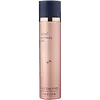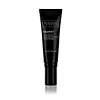What's inside
What's inside
 Key Ingredients
Key Ingredients

 Benefits
Benefits

 Concerns
Concerns

 Ingredients Side-by-side
Ingredients Side-by-side

Water
Skin ConditioningNiacinamide
SmoothingEthylhexyl Olivate
Skin ConditioningJojoba Esters
EmollientGlycerin
HumectantCetearyl Olivate
Isocetyl Stearoyl Stearate
EmollientSodium Lactate
BufferingSorbitan Olivate
EmulsifyingCoco-Caprylate/Caprate
EmollientPolyglycerin-6
HumectantCetearyl Alcohol
EmollientButylene Glycol
HumectantMagnesium Gluconate
Skin ConditioningArginine
MaskingHeptapeptide-7
Skin ConditioningNicotiana Benthamiana Hexapeptide-40 Sh-Polypeptide-76
Skin ConditioningEragrostis Tef Seed Extract
EmollientAdenosine
Skin ConditioningCarnosine
Skin ConditioningAminopropyl Ascorbyl Phosphate
AntioxidantCitrullus Lanatus Fruit Extract
Skin ConditioningLens Esculenta Fruit Extract
Skin ConditioningEpigallocatechin Gallate
AntioxidantPyrus Malus Fruit Extract
Skin ConditioningHydrolyzed Sodium Hyaluronate
Skin ConditioningLinoleic Acid
CleansingTocopheryl Acetate
AntioxidantLinolenic Acid
CleansingSqualane
EmollientSodium PCA
HumectantTremella Fuciformis Extract
HumectantTocopherol
AntioxidantCetyl Palmitate
EmollientSorbitan Palmitate
EmulsifyingCetyl Alcohol
EmollientPentaerythrityl Tetra-Di-T-Butyl Hydroxyhydrocinnamate
AntioxidantSodium Stearoyl Glutamate
CleansingPropanediol
SolventSilica
AbrasiveC9-12 Alkane
SolventPullulan
Xanthan Gum
EmulsifyingTriheptanoin
Skin ConditioningSclerotium Gum
Emulsion StabilisingSorbitan Oleate
EmulsifyingEthylhexylglycerin
Skin ConditioningAmmonium Polyacryloyldimethyl Taurate
Emulsion StabilisingMyristyl Alcohol
EmollientStearyl Alcohol
EmollientCalcium Gluconate
HumectantPolyurethane-10
Lecithin
EmollientGluconolactone
Skin ConditioningPhenoxyethanol
PreservativeSodium Benzoate
MaskingPhytic Acid
Potassium Sorbate
PreservativeCitric Acid
BufferingSodium Hydroxide
BufferingWater, Niacinamide, Ethylhexyl Olivate, Jojoba Esters, Glycerin, Cetearyl Olivate, Isocetyl Stearoyl Stearate, Sodium Lactate, Sorbitan Olivate, Coco-Caprylate/Caprate, Polyglycerin-6, Cetearyl Alcohol, Butylene Glycol, Magnesium Gluconate, Arginine, Heptapeptide-7, Nicotiana Benthamiana Hexapeptide-40 Sh-Polypeptide-76, Eragrostis Tef Seed Extract, Adenosine, Carnosine, Aminopropyl Ascorbyl Phosphate, Citrullus Lanatus Fruit Extract, Lens Esculenta Fruit Extract, Epigallocatechin Gallate, Pyrus Malus Fruit Extract, Hydrolyzed Sodium Hyaluronate, Linoleic Acid, Tocopheryl Acetate, Linolenic Acid, Squalane, Sodium PCA, Tremella Fuciformis Extract, Tocopherol, Cetyl Palmitate, Sorbitan Palmitate, Cetyl Alcohol, Pentaerythrityl Tetra-Di-T-Butyl Hydroxyhydrocinnamate, Sodium Stearoyl Glutamate, Propanediol, Silica, C9-12 Alkane, Pullulan, Xanthan Gum, Triheptanoin, Sclerotium Gum, Sorbitan Oleate, Ethylhexylglycerin, Ammonium Polyacryloyldimethyl Taurate, Myristyl Alcohol, Stearyl Alcohol, Calcium Gluconate, Polyurethane-10, Lecithin, Gluconolactone, Phenoxyethanol, Sodium Benzoate, Phytic Acid, Potassium Sorbate, Citric Acid, Sodium Hydroxide
Water
Skin ConditioningGlycerin
HumectantTricaprylin
MaskingCetyl Esters
EmollientCanarium Indicum Seed Oil
Skin ConditioningCocos Nucifera Fruit Extract
EmollientC12-15 Alkyl Benzoate
AntimicrobialGlyceryl Stearate Citrate
EmollientCetearyl Alcohol
EmollientDimethicone
EmollientSqualane
EmollientGlyceryl Stearate
EmollientPEG-100 Stearate
Methylsilanol Carboxymethyl Theophylline Alginate
Skin ConditioningHordeum Distichon Extract
Skin ProtectingYeast Extract
Skin ConditioningSantalum Album Extract
CleansingPrunus Amygdalus Dulcis Seed Extract
Skin ConditioningPhellodendron Amurense Bark Extract
Skin ConditioningPalmitoyl Tripeptide-5
Skin ConditioningLauryl Lactate
EmollientSteareth-10
EmulsifyingCeramide Ng
Skin ConditioningDihydromyricetin
Skin ConditioningPalmitoyl Tetrapeptide-7
Skin ConditioningEnteromorpha Compressa Extract
Skin ProtectingTripleurospermum Maritimum Extract
Skin ProtectingPalmitoyl Dipeptide-5 Diaminobutyroyl Hydroxythreonine
Skin ConditioningBambusa Vulgaris Leaf/Stem Extract
HumectantSteareth-20
CleansingHydroxyethyl Acrylate/Sodium Acryloyldimethyl Taurate Copolymer
Emulsion StabilisingPalmitoyl Hexapeptide-12
Skin ConditioningPisum Sativum Extract
Skin ConditioningTocopherol
AntioxidantPolysorbate 60
EmulsifyingButylene Glycol
HumectantGlucosamine Hcl
Tetrahexyldecyl Ascorbate
AntioxidantPEG-10 Phytosterol
EmulsifyingTetradecyl Aminobutyroylvalylaminobutyric Urea Trifluoroacetate
Skin ConditioningTriethanolamine
BufferingCaprylyl Glycol
EmollientTribehenin
EmollientDiazolidinyl Urea
PreservativeCarbomer
Emulsion StabilisingDisodium EDTA
Xanthan Gum
EmulsifyingIodopropynyl Butylcarbamate
PreservativePotassium Sorbate
PreservativeMagnesium Chloride
Sodium Benzoate
MaskingSorbic Acid
PreservativeParfum
MaskingWater, Glycerin, Tricaprylin, Cetyl Esters, Canarium Indicum Seed Oil, Cocos Nucifera Fruit Extract, C12-15 Alkyl Benzoate, Glyceryl Stearate Citrate, Cetearyl Alcohol, Dimethicone, Squalane, Glyceryl Stearate, PEG-100 Stearate, Methylsilanol Carboxymethyl Theophylline Alginate, Hordeum Distichon Extract, Yeast Extract, Santalum Album Extract, Prunus Amygdalus Dulcis Seed Extract, Phellodendron Amurense Bark Extract, Palmitoyl Tripeptide-5, Lauryl Lactate, Steareth-10, Ceramide Ng, Dihydromyricetin, Palmitoyl Tetrapeptide-7, Enteromorpha Compressa Extract, Tripleurospermum Maritimum Extract, Palmitoyl Dipeptide-5 Diaminobutyroyl Hydroxythreonine, Bambusa Vulgaris Leaf/Stem Extract, Steareth-20, Hydroxyethyl Acrylate/Sodium Acryloyldimethyl Taurate Copolymer, Palmitoyl Hexapeptide-12, Pisum Sativum Extract, Tocopherol, Polysorbate 60, Butylene Glycol, Glucosamine Hcl, Tetrahexyldecyl Ascorbate, PEG-10 Phytosterol, Tetradecyl Aminobutyroylvalylaminobutyric Urea Trifluoroacetate, Triethanolamine, Caprylyl Glycol, Tribehenin, Diazolidinyl Urea, Carbomer, Disodium EDTA, Xanthan Gum, Iodopropynyl Butylcarbamate, Potassium Sorbate, Magnesium Chloride, Sodium Benzoate, Sorbic Acid, Parfum
Ingredients Explained
These ingredients are found in both products.
Ingredients higher up in an ingredient list are typically present in a larger amount.
Butylene Glycol (or BG) is used within cosmetic products for a few different reasons:
Overall, Butylene Glycol is a safe and well-rounded ingredient that works well with other ingredients.
Though this ingredient works well with most skin types, some people with sensitive skin may experience a reaction such as allergic rashes, closed comedones, or itchiness.
Learn more about Butylene GlycolCetearyl alcohol is a mixture of two fatty alcohols: cetyl alcohol and stearyl alcohol. It is mainly used as an emulsifier. Emulsifiers help prevent the separation of oils and products. Due to its composition, it can also be used to thicken a product or help create foam.
Cetearyl alcohol is an emollient. Emollients help soothe and hydrate the skin by trapping moisture.
Studies show Cetearyl alcohol is non-toxic and non-irritating. The FDA allows products labeled "alcohol-free" to have fatty alcohols.
This ingredient is usually derived from plant oils such as palm, vegetable, or coconut oils. There is debate on whether this ingredient will cause acne.
Due to the fatty acid base, this ingredient may not be Malassezia folliculitis safe.
Learn more about Cetearyl AlcoholGlycerin is already naturally found in your skin. It helps moisturize and protect your skin.
A study from 2016 found glycerin to be more effective as a humectant than AHAs and hyaluronic acid.
As a humectant, it helps the skin stay hydrated by pulling moisture to your skin. The low molecular weight of glycerin allows it to pull moisture into the deeper layers of your skin.
Hydrated skin improves your skin barrier; Your skin barrier helps protect against irritants and bacteria.
Glycerin has also been found to have antimicrobial and antiviral properties. Due to these properties, glycerin is often used in wound and burn treatments.
In cosmetics, glycerin is usually derived from plants such as soybean or palm. However, it can also be sourced from animals, such as tallow or animal fat.
This ingredient is organic, colorless, odorless, and non-toxic.
Glycerin is the name for this ingredient in American English. British English uses Glycerol/Glycerine.
Learn more about GlycerinPotassium Sorbate is a preservative used to prevent yeast and mold in products. It is commonly found in both cosmetic and food products.
This ingredient comes from potassium salt derived from sorbic acid. Sorbic acid is a natural antibiotic and effective against fungus.
Both potassium sorbate and sorbic acid can be found in baked goods, cheeses, dried meats, dried fruit, ice cream, pickles, wine, yogurt, and more.
You'll often find this ingredient used with other preservatives.
Learn more about Potassium SorbateSodium Benzoate is a preservative. It's used in both cosmetic and food products to inhibit the growth of mold and bacteria. It is typically produced synthetically.
Both the US FDA and EU Health Committee have approved the use of sodium benzoate. In the US, levels of 0.1% (of the total product) are allowed.
Sodium benzoate works as a preservative by inhibiting the growth of bacteria inside of cells. It prevents the cell from fermenting a type of sugar using an enzyme called phosphofructokinase.
It is the salt of benzoic acid. Foods containing sodium benzoate include soda, salad dressings, condiments, fruit juices, wines, and snack foods.
Studies for using ascorbic acid and sodium benzoate in cosmetics are lacking, especially in skincare routines with multiple steps.
We always recommend speaking with a professional, such as a dermatologist, if you have any concerns.
Learn more about Sodium BenzoateSqualane is an emollient that helps the skin hold onto moisture. It's an oily liquid that occurs naturally in certain types of fish and plant oils.
Because squalane boosts hydration in the skin, it also comes with plenty of benefits: it is an antioxidant and can help fight free radicals and skin damage. Squalane is also found to have a detoxifying effect when applied.
Squalane comes from squalene, which occurs naturally within the sebum of our skin. It is one of the oils our skin produces to keep itself hydrated. Squalane is the hydrogenated version of squalene and has a longer shelf life.
Research shows that squalane is non-irritating (even at 100% concentration).
In general, it's a fantastic ingredient. It does a great job at hydrating the skin, and it's suitable for those with sensitive skin.
The source of squalane may impact malassezia / fungal acne. This is because olive oil derived squalane can contain impurities such as fatty acids and plant waxes. Sugarcane derived squalane is recommended for anyone with malassezia concerns.
Is squalane vegan?
This depends on the source. Squalane can be derived from both plants and animals. Most squalane used in skincare comes from plants.
Please note: the source of squalane is only known if disclosed by the brand. We recommend reaching out to the brand if you have any questions about their squalane.
Read more about squalene with an "e".
Is squalane an oil?
Squalane is often called an oil, but it’s technically not; it’s a hydrocarbon, meaning it’s only made of carbon and hydrogen, unlike true oils which are triglycerides made of fatty acids and glycerol.
The term “oil-free” isn’t regulated, so companies can define it however they want. Some exclude all oils, while others just avoid mineral oil or comedogenic oils.
While some people avoid oils thinking they cause breakouts, the right kind of oil (or oil-like ingredient like squalane) can actually help balance and hydrate your skin. It’s worth testing out simple oils or squalane to see what works best for your skin.
Learn more about SqualaneTocopherol (also known as Vitamin E) is a common antioxidant used to help protect the skin from free-radicals and strengthen the skin barrier. It's also fat soluble - this means our skin is great at absorbing it.
Vitamin E also helps keep your natural skin lipids healthy. Your lipid skin barrier naturally consists of lipids, ceramides, and fatty acids. Vitamin E offers extra protection for your skin’s lipid barrier, keeping your skin healthy and nourished.
Another benefit is a bit of UV protection. Vitamin E helps reduce the damage caused by UVB rays. (It should not replace your sunscreen). Combining it with Vitamin C can decrease sunburned cells and hyperpigmentation after UV exposure.
You might have noticed Vitamin E + C often paired together. This is because it is great at stabilizing Vitamin C. Using the two together helps increase the effectiveness of both ingredients.
There are often claims that Vitamin E can reduce/prevent scarring, but these claims haven't been confirmed by scientific research.
Learn more about TocopherolWater. It's the most common cosmetic ingredient of all. You'll usually see it at the top of ingredient lists, meaning that it makes up the largest part of the product.
So why is it so popular? Water most often acts as a solvent - this means that it helps dissolve other ingredients into the formulation.
You'll also recognize water as that liquid we all need to stay alive. If you see this, drink a glass of water. Stay hydrated!
Learn more about WaterXanthan gum is used as a stabilizer and thickener within cosmetic products. It helps give products a sticky, thick feeling - preventing them from being too runny.
On the technical side of things, xanthan gum is a polysaccharide - a combination consisting of multiple sugar molecules bonded together.
Xanthan gum is a pretty common and great ingredient. It is a natural, non-toxic, non-irritating ingredient that is also commonly used in food products.
Learn more about Xanthan Gum